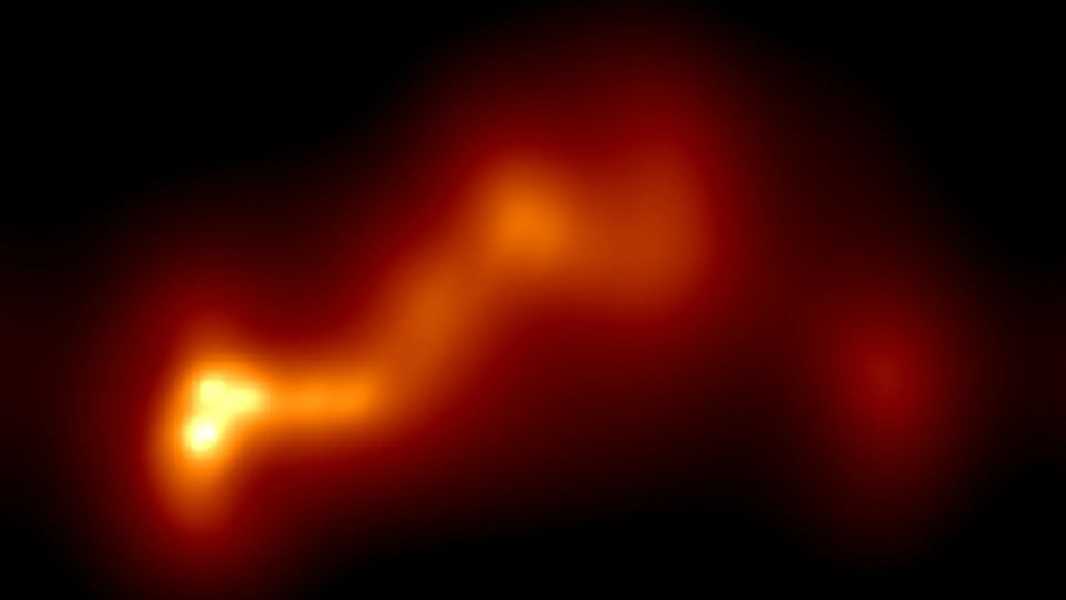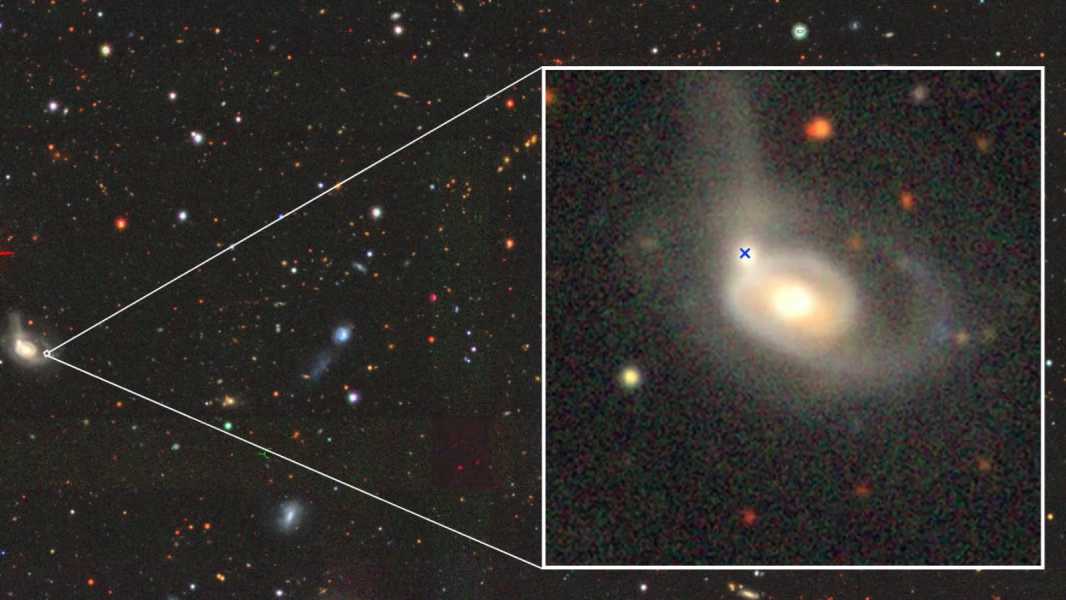
Radio wave image of the warped jet emanating from the supermassive black hole system OJ 287. (Image credit: Dr Eftalia Traianou, Heidelberg University, IWR)
The stream of particles emanating from the massive black hole has been found to be highly curved, providing compelling evidence that the black hole is in fact part of one of the most extreme binary systems known.
The black hole and its warped jet are located in a blazar known as OJ 287, about four billion light-years from Earth. A blazar is a quasar that we see head-on, and a quasar is an active galactic nucleus where a supermassive black hole is gobbling up a huge amount of matter. This matter spirals around the black hole, forming what is called an accretion disk. The amount of matter is so large that the accretion disk becomes a bottleneck.
Instead of falling into the black hole, the incoming material accumulates in a disk, its density and temperature increase dramatically, and it shines so brightly that it can be seen throughout the universe. Magnetic fields surrounding the accretion disk can direct some of the charged particles of matter away from the black hole, collimating and accelerating them into two counter-propagating jets that are ejected from the black hole for thousands of light years at close to the speed of light. Because we see blazars almost at right angles, they appear even brighter than ordinary quasars.
You may like
-

Astronomers have discovered a black hole tearing apart a star in a galactic collision. 'It's an unusual event.'
Sourse: www.livescience.com





